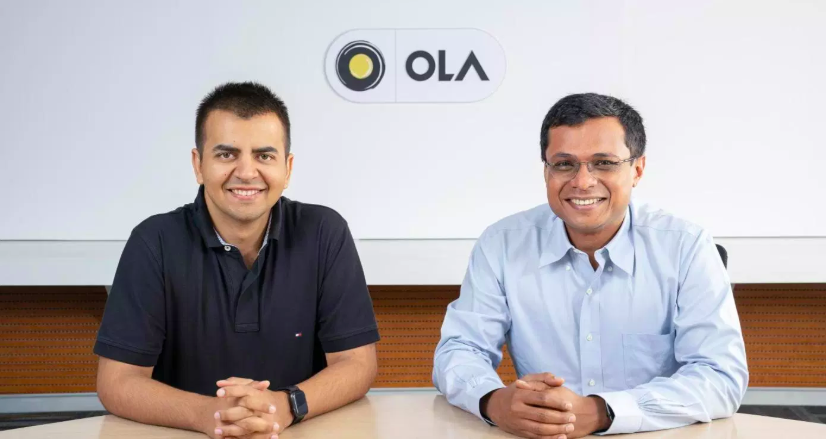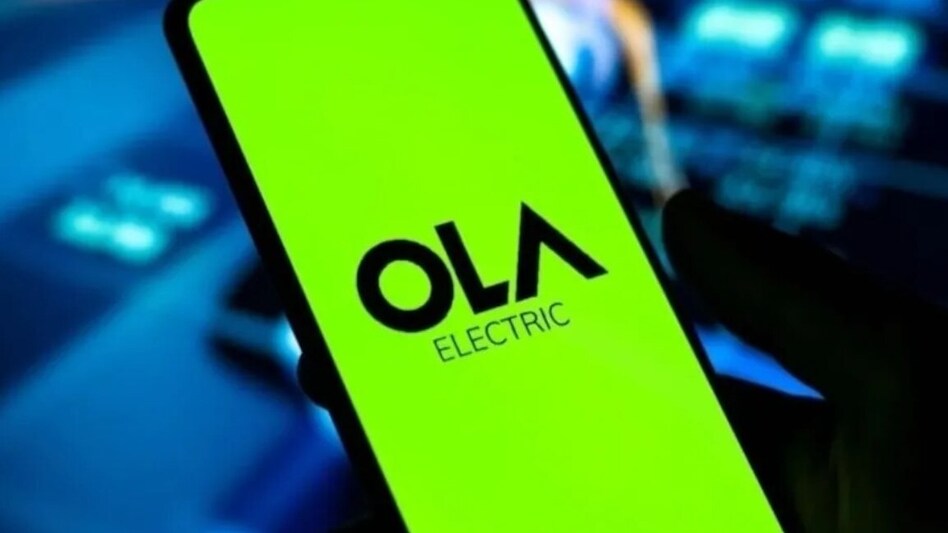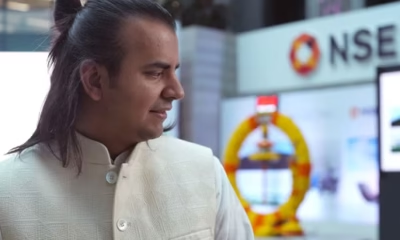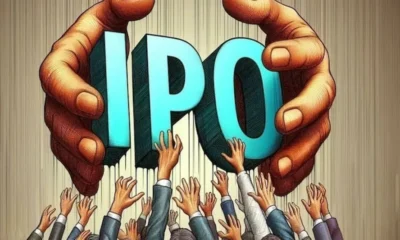Business
Why Is Sachin Bansal In Talks To Sell His $100 Million Stake In Ola? Potential Impacts On Ola’s Future Even As It Answers Valuation Concerns
Published
9 months agoon

In a move that could reshape dynamics within Ola, Sachin Bansal, the co-founder of Flipkart, is reportedly exploring the sale of his $100 million stake in the ride-hailing giant. Bansal made this significant investment in 2019, valuing the company at approximately $3 billion. However, as per recent reports, he is now seeking a premium, valuing Ola at around $4 billion. The outcome of this deal will largely depend on how the valuation aligns with investor expectations.
Context Behind Bansal’s Decision
This development follows Bansal’s exit from Ather Energy, another high-profile EV startup, where he sold his stake to Zerodha’s Nikhil Kamath. According to sources, Bansal has been increasingly focused on scaling his fintech venture, Navi with ambitions to create a formidable financial services platform, he is liquidating significant holdings like Ola to build a robust war chest for Navi’s growth.
While Bansal has reportedly discussed his exit plans with Ola’s CEO Bhavish Aggarwal, he has also engaged potential buyers, including family offices and private investment firms that are active in public markets. These discussions signal his willingness to negotiate on valuation to ensure a successful transaction.
Ola’s Current Trajectory
Bansal’s potential exit comes at a critical juncture for Ola. Earlier this year, Ola Electric, the EV arm of the company, made headlines with its IPO. Founder Bhavish Aggarwal compared the company’s trajectory to Virat Kohli’s batting stats—steadily climbing. At the time, the confidence seemed justified, as Ola Electric closed FY24 as the market leader in the EV scooter category despite quality and service-related challenges.
However, post-IPO, Ola Electric’s challenges have intensified. Complaints regarding vehicle quality and after-sales service have grown, leading to a dip in new vehicle registrations. Likewise Competitors like Ather Energy and legacy players are gaining ground and have capitalized on this, chipping away at Ola Electric’s market share.

So while Bansal is looking to exit Ola, what could be the repurcusions on Ola’s future?
Firstly, a high-profile exit like Bansal’s could raise questions about Ola’s valuation and growth prospects, particularly at a time when the company is already cornered with quality concerns and increased competition.
Secondly, while Ola Electric’s IPO injected capital, the parent company’s ability to secure fresh funding could be influenced by the optics of a major investor selling out.
Thirdly, Bhavish Aggrawal has himself come under the scanner for his leadership style, moreover the company has seen some high profile management exits, hence Aggarwal’s ability to steer Ola through these challenges will be closely watched. The sale of Bansal’s stake will most likely prompt Aggarwal to recalibrate strategies to reassure investors and stakeholders.
For Bansal, the move aligns with his broader vision for Navi. By unlocking capital from legacy investments, he positions Navi for aggressive expansion, especially as he explores external fundraising.
The Ever Critical Question Of Ola’s Valuation
Ola, operated by Bengaluru-based ANI Technologies, is under the lens as it prepares for a public listing by March 2026. While plans for an IPO have been initiated, critical details remain unresolved, leaving potential investors seeking clarity on valuation and exit strategies.
Once a poster child of India’s startup ecosystem, Ola’s valuation has faced significant erosion. Vanguard pegged the company’s worth at $2 billion in August 2024—a steep fall from its $7.3 billion peak in 2021. This decline mirrors the turbulence Ola has experienced post-COVID-19, with shifting business models and mounting challenges in its core ride-hailing and EV segments.
Despite revenue growth of 58% to ₹2,135 crore in FY23, the company reported a loss of ₹1,082 crore. While these losses were reduced compared to the previous year, the path to profitability remains uncertain. Ola’s rebranding as “Ola Consumer,” aimed at positioning itself as a diversified consumer internet firm, has complicated things further.
IPO. A Litmus Test for Ola
Ola’s IPO is expected to be a defining moment, not just for the company but also for India’s startup ecosystem; however there is also a wave of skepticism –
For one, there are significant valuation challenges. Ola has already lowered its IPO valuation expectations, yet market observers believe even these revised figures might be overly optimistic.
Secondly, existing investors are reportedly considering offloading shares during the IPO, further complicating the scenario.
Thridly, with Sachin Bansal’s plans public scrutiny will likely intensify, the company’s financial health and strategic direction will face greater examination.
Recent months have seen a dip in EV registrations, driven by mounting customer complaints over product quality and after-sales service. Further competitors like Ather Energy and established auto giants have capitalized on these shortcomings, leaving Ola Electric fighting to maintain its footing. The company’s inability to address these issues promptly raises doubts about its path to profitability and long-term viability.

Strategic Shifts. Hope or Distraction?
Ola’s foray into food and grocery delivery via ONDC and its launch of a dark store-as-a-service model reflect its ambition to diversify revenue streams; while these initiatives align with broader market trends, they also dilute focus from its core businesses.
Investors will be watching closely to see if these ventures generate sustainable growth or merely add to the company’s financial strain.
The public market’s patience with loss-making startups has been waning, as seen with early tech IPOs like Zomato, Paytm, Nykaa, and Policybazaar. These companies faced steep declines in stock prices, driven by their struggle to achieve profitability. Despite this backdrop, Ola Electric has chosen to pursue an IPO without a clear breakeven timeline, raising critical questions about its readiness for public scrutiny.
Profitability, A Distant Goal?
Ola Electric reported shrinking losses and sequential revenue growth in Q1 FY24, primarily fueled by record scooter deliveries; however, this peak performance is unlikely to be sustained in the near term.
Moreover, seasonal factors like festive sales and discounts introduced volatility into quarterly sales, making consistent growth challenging. Hence, with scooters as its sole revenue driver, Ola Electric must significantly scale sales—by at least 30%-40%—to reach breakeven.
Research from BofA Global and Goldman Sachs paints a tough picture, estimating that the company may remain loss-making until FY27 and achieving profitability will demand sustained operational improvements, even as competition in the EV space intensifies.
The Service Problem. An Urgent Priority
One of Ola Electric’s biggest hurdles is its reputation for poor service quality and product reliability. From scooters catching fire to widespread customer complaints, these issues have tarnished the brand. The problem has persisted despite public outcry, culminating in a show-cause notice from the Central Consumer Protection Authority (CCPA).
The situation was further tested by a high-profile Twitter spat between CEO Bhavish Aggarwal and comedian Kunal Kamra, which reignited consumer frustrations. In response, Ola Electric has enlisted EY India for a “service transformation,” signaling a recognition of the critical need to rebuild trust.
Diversification, Opportunity or Distraction?
To mitigate risks, Ola Electric has outlined plans to expand into the electric three-wheeler and motorcycle segments. The three-wheeler market, known for higher margins, could provide a much-needed boost to profitability. Additionally, electric motorcycles might help Ola Electric capture a larger share of the growing EV market.
However, diversification without resolving existing product and service issues could dilute focus and worsen customer dissatisfaction. Analysts argue that addressing foundational problems must take precedence over expanding the product line.
What About The Famous Battery Manufacture?
Ola Electric’s ambitions in battery manufacturing could also influence its path to profitability. Vertical integration may lower costs and improve margins, but it requires significant capital investment and operational expertise. Whether these efforts can offset the company’s challenges in customer satisfaction and sales volume remains to be seen.
The Last Bit
Bansal’s potential exit illustrate the shifting priorities of one of India’s most prominent entrepreneurs. While Ola continues to battle headwinds in its EV journey, its ability to maintain investor confidence and address operational challenges will be critical.
As for Bansal, the sale could mark another milestone in his transition from e-commerce pioneer to fintech trailblazer.
However, the overarching question for investors still remains the same – When will Ola Electric—and by extension, ANI Technologies—snap its loss-making streak?
Ola’s leadership, led by Bhavish Aggarwal, has consistently emphasized a vision of growth and innovation. However, the reality of shrinking market share, valuation cuts, and operational inefficiencies tells a more sobering story and with Bansal’s exit, even more so.
You may like
-


The Strategy Behind Ola Groups Restructuring Plans. How, Why And What? Retail Investor Sentiment, A Trust Deficit?
-


2025 To Be The Year Of IPO Fireworks For Indian Companies. Here’s A Sneak Peek Into IPOs For January
-
EVs Stuck In The Slow Lane In The Funding Race. Can India’s Electric Revolution Gain Speed In 2025?
-


Yet Another Jolt To Ola. N Balachandar, Group Chief People Officer Quits. Why Does Almost Everything Feel Like GO-La At Bhavish Aggarwal’s Ola?
